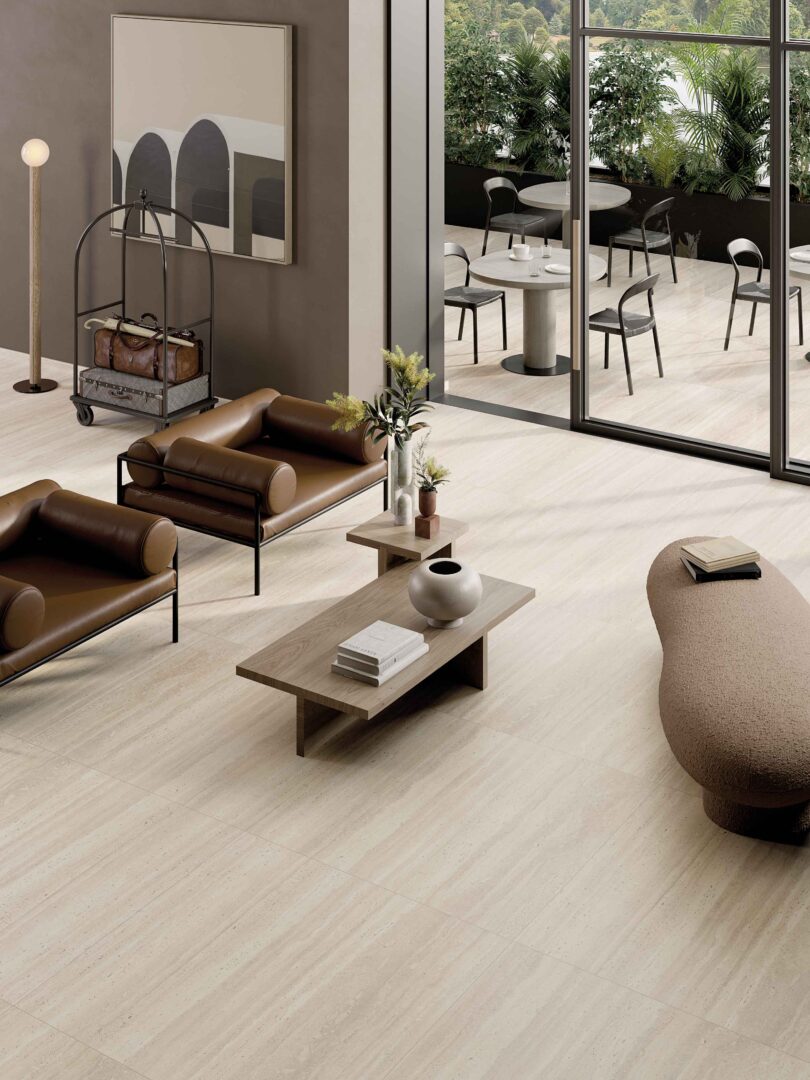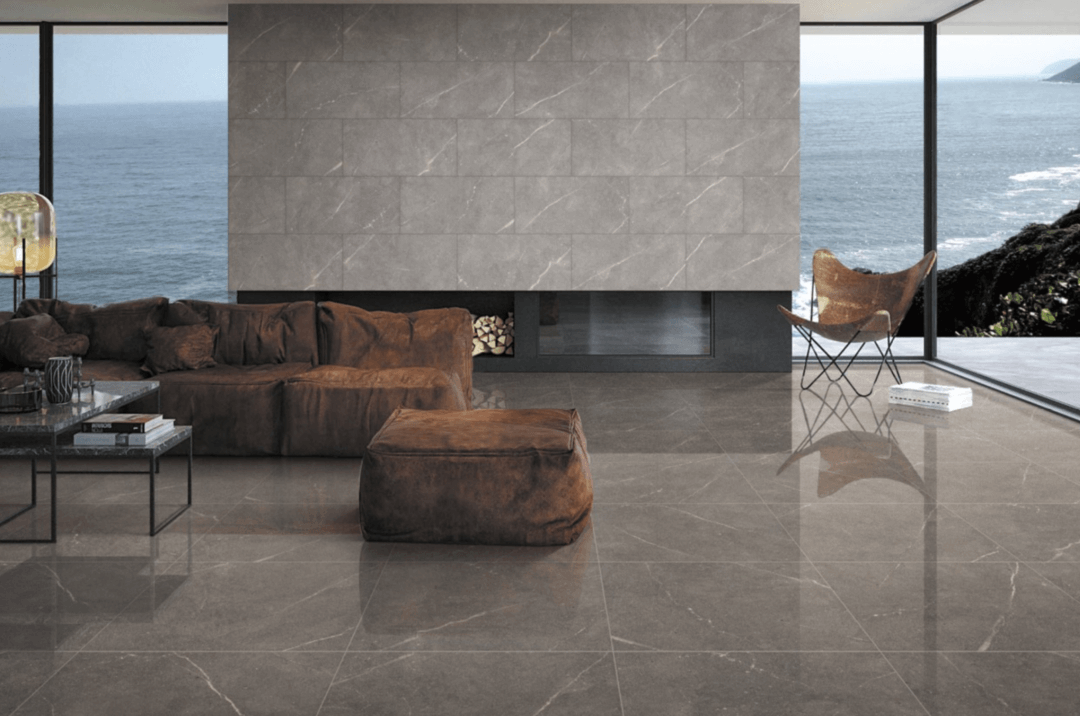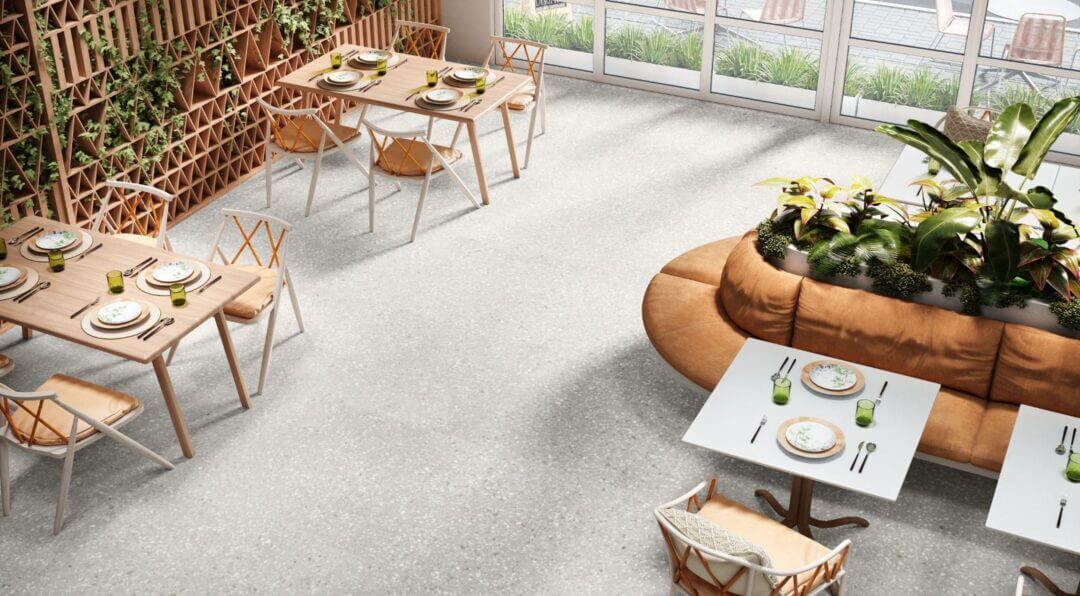
Range: Sensi Roma, Ivory

Navigating the Distinction Between Porcelain and Ceramic Tiles
In the realm of architectural design, every detail matters. From conceptualisation to execution, specifiers are entrusted with crafting spaces that embody both aesthetic allure and functional brilliance. Amidst the myriad choices that shape a project, the selection of tiles holds a particularly intricate role. Welcome to an exploration of the intricate nuances between porcelain and ceramic tiles – an essential consideration for discerning architects who champion quality and performance.
Tile Warehouse are passionate about product quality and control the specifications from the factory right through to suitability for the end customer. This leaves little or no room for incorrect specification and end-use.
Discerning Beyond the Surface: The Unveiling of Bisque and Surface Hardness
As specifiers, your vision extends beyond the exterior to encompass the essence of every element within a design. Our ethos at Tile Warehouse resonates with this commitment to holistic evaluation. In making decisions on imports, we scrutinise the composition of each tile – from its bisque, or body, to its surface hardness – all while aligning with the unique demands of our market.
Within our industry, a common misconception is that tiles with water absorption ranging from 1% to 3% can be classed as ‘porcelain’ – as opposed to the more correct term of ‘ceramic’. Porcelain tiles, architecturally speaking, necessitate a body water absorption of 0.5% or less. It is imperative to recognise that tiles with 1% to 3% water absorption, while enticingly affordable, cannot parallel the performance benchmarks of authentic porcelain. It’s an architectural disservice when such tiles are unjustly touted as porcelain.

Range: Cosmos Dark Grey
Pricing Versus Prudence: A Journey into Quality Assurance
Across the years, we’ve been presented with the allure of cheaper tiles claiming to be porcelain but with too high water absorption. Ethically in supporting our first-quality-only tile we consider pricing but not at the cost of quality product.
Beyond being a mere numerical attribute, water absorption embodies the entirety of a tile’s technical prowess. We’ve remained steadfast in declining tiles that fail to meet the stringent criteria that we set, particularly for flooring.
This steadfastness emerges from a critical architectural concern – the perils of sacrificing quality for cost reduction. Does a slashed price tag signal compromised raw materials? Could the pressing process lack the necessary intensity to eradicate air bubbles? Are firing temperatures dialled down to economise? These interrogations unveil the intricacies of architectural integrity, where every compromise reverberates through performance.
Navigating Potential Pitfalls: A Blueprint for Excellence
A subpar tile can engender a medley of architectural woes: unsightly staining, irksome crazing, susceptibility to frost damage, diminished structural integrity, and more. From unglazed through-body tiles staining to glazed tiles succumbing to excessive movement-induced crazing, external applications yielding frost damage, and water-absorbing bodies causing glaze-associated staining – the architectural repercussions of compromised tiles can manifold.
At Tile Warehouse, our commitment to architectural excellence shines through our exclusive offering of first-quality tiles. We shun commercial-choice, run-of-kiln (ie: those that are a mixture of all productions – first, seconds etc) as well as second-choice tiles and mixed batches. We meticulously curate our collection to circumvent defects, imperfections, and sizing disparities. The pursuit of true porcelain quality demands special clays, feldspars, and minerals. These ingredients undergo rigorous pressing at heightened PSI levels and firing at temperatures surpassing 1200 degrees celsius – and often up to 1300 degrees.

Range: Obi Perla
Guiding Architects Toward Safer Choices and Product Longevity
Within architectural specification, for a fail-proof project outcome, meticulous choices must be made for every project. The temptation of a bargain should always lead a specifier to a detailed inquiry. When confronted with an enticingly economical tile proposition, architects are urged to dissect its authenticity, quality, and potential for performance.
We believe we are not merchants of tiles; we are architects of informed choices. As you design with the juxtaposition of form and function, beauty and resilience, in mind, we willingly offer expert Commercial representatives to assist and guide you.
The Difference between Ceramic and Porcelain
Porcelain tiles are typically pressed at higher kg per metre (up to 4500kg per m2) and fired to a much hotter temperature (up to 1300 degrees celsius) than ceramics meaning they are more dense which makes them more durable and less likely to damage under impact or accept staining if they are homogeneous (unglazed) porcelain.
Because of porcelain’s lower porosity and higher density, they are considered technically superior to ceramics and therefore a better fit-for-purpose for flooring.
With over 100 years of tile experience, Tile Warehouse’s Commercial Representatives are available to assist you with specification and best fit-for-purpose products for your upcoming projects. Contact one of our Commercial Representatives today!

